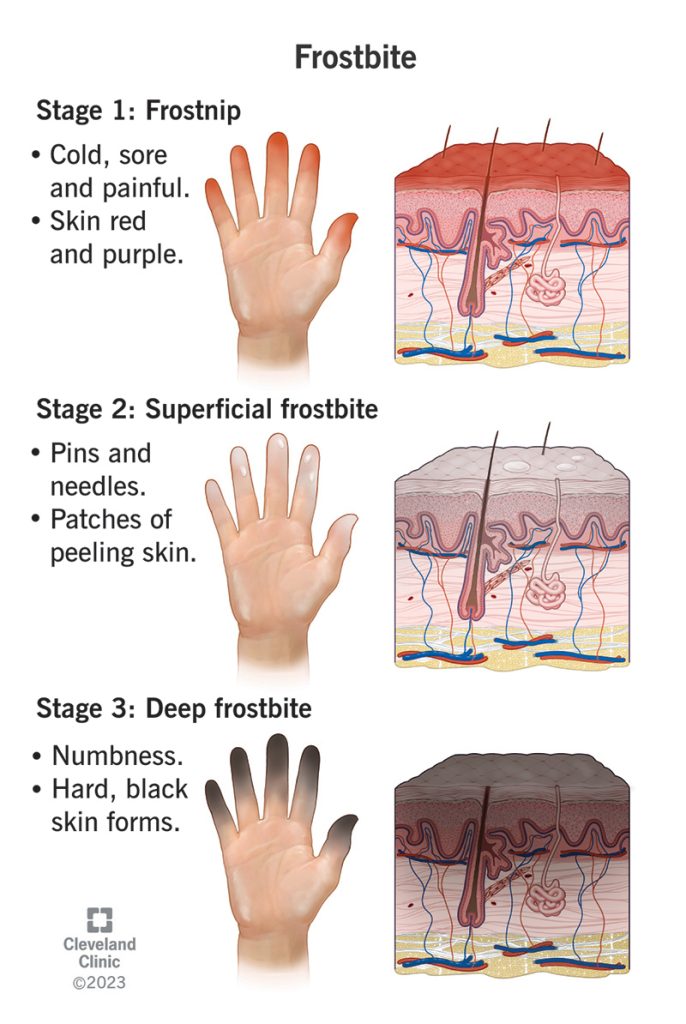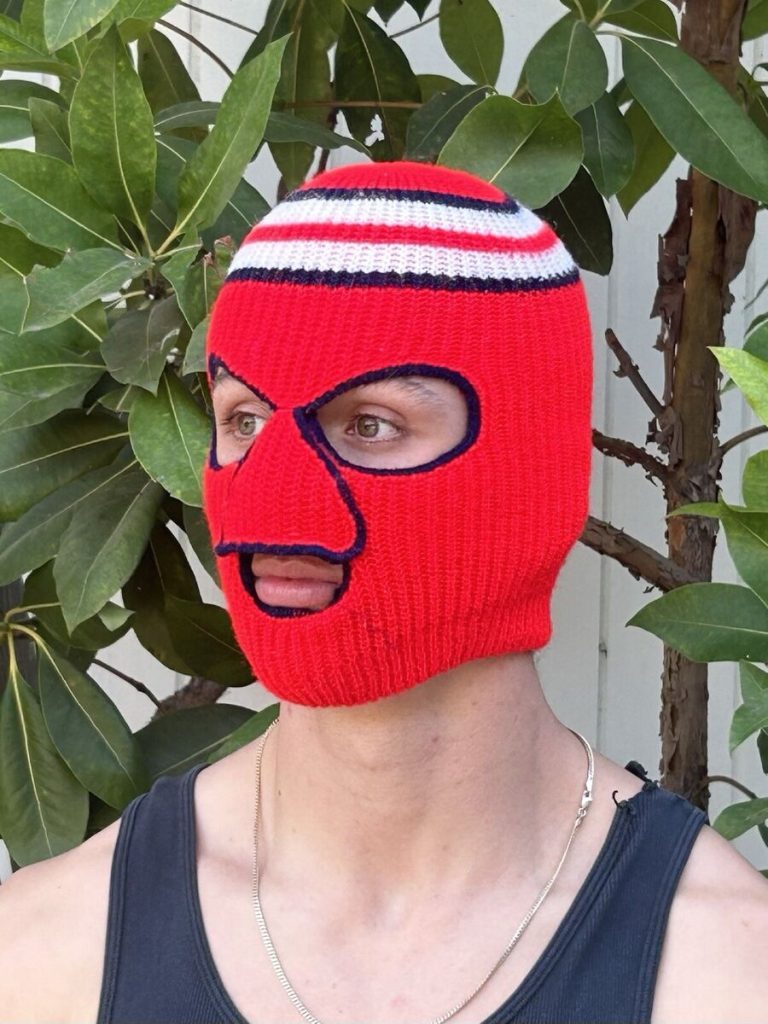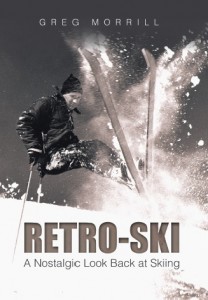I can remember where I was the first time I got frostbite skiing. I don’t remember the exact date, but it had to be in January 1969. On one of those frigid subzero days we were lucky enough to get the car started and a group of us went to Smuggs. Actually in those days it was called Madonna. We took our first run on Sterling, probably because the Madonna lift was on wind-hold. I skied down Rum Runner and stopped at the junction with Black Snake. I was waiting for my friends when a stranger skied up to me. He took one look at me and told me I had frostbite on my nose! I had never knowingly had frostbite while skiing. Thirty seconds later I was warming up in the Madonna base lodge. I did not wait to tell my friends where I was going. They eventually joined me in the base lodge. I think we only took four runs that day!
So what is frostbite? A Google definition says frostbite is “an injury caused by freezing of the skin and underlying tissues.” I did learn in looking it up that what I had was called “frostnip” which is the early stage of frostbite. That’s when you get those white spots on your exposed skin. And as long as someone is there to point it out to you, you can just warm that spot up and continue what you were doing. I feel I should add, don’t rub it to warm it up! Just covering the exposed skin usually will be enough to warm the area.
What if there’s no one there to tell you when you have frostnip? Then it can progress and leave a mark that lasts a few days. For some of us, that was a badge of honor to compare with your buddies. Ear lobes were particularly susceptible to frostbite. For one, there’s little or no feeling in them so you weren’t aware that you got zapped. That is, until the next day when they were red and swollen.
The ear lobe situation was a result of the fact that everyone wore wool hats and it was difficult to keep them covering your entire ear. Even the famous Moriarty hats couldn’t guarantee your ear lobes were protected.
That brings us to the then-and-now comparison. One of the big differences in staying warm today is the helmet! Independent of the safety factor, helmets provide warmth and they cover the ears completely. Another advancement for covering exposed skin is the neck gaiter. We used scarves with various degrees of success. Yes, there were face masks, but they were the ugliest things and no self-respecting skier would wear them. When you saw someone wearing one on the slopes, you knew they were from New Jersey!
To finish up the head gear comparison, modern ski goggles are so much better than those in the Retro-Ski days. For one, they don’t fog up as easily which isn’t directly related to staying warm, but nothing makes you feel colder than struggling with your goggles. Plus today’s goggles paired with a complementary helmet totally do away with “goggle gap!”
In the battle to stay warm on frigid days, there have also been advancements in keeping our hands and feet warm. Thanks to improved battery technology, boot heaters can now work even on the coldest days. Back in the early 1970s a ski instructor friend of mine invested in a set of boot heaters. They worked great except on cold days! I remember him saying that on frigid days the batteries were done before their morning lineup was over. Also battery technology has settled the old gloves versus mittens debate. You can get either gloves or mittens with built-in heaters. And all of these heaters can be controlled by an App on your phone!
So I’ve described how much better we’re equipped today to ski in frigid, sub-zero weather. So does that mean you’ll see me out there on the slopes the next time the thermometer reads -20? Hell, no! Wisdom comes with age.



January 28, 2025 at 3:31 pm
Ah – cold days memories. When I was in middle school in the early 70’s our school ski club went to Gore Mountain (North Creek, NY) a few times. One particular trip was memorable for the wrong reasons. Temp was at about -20 degrees before wind chill was figured in. Lifts only running to mid-station with lift operators looking at everyone for signs of frost bite. I took maybe 2 runs before calling it a day. The lodge quickly filled up with the kids and the chaperones – a couple of our teachers who skied – took the head count and then it was on the bus for the ride home. You are so right about all the advancements in ski garb – warmth and comfort really do add to the enjoyment of the sport. PS – have you done any articles on the history of ski goggles. Back in my day it seemed that Smths were all the rage.